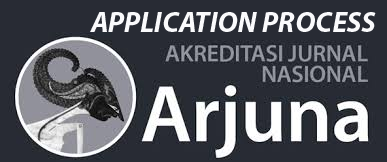Analisis Faktor Dan Cara Penanganan Bullying
DOI:
https://doi.org/10.56444/soshumdik.v2i3.1027Keywords:
Bullying, Bullying Factors, Parenting PatternsAbstract
This study aims to analyze the factors influencing bullying behavior in children, as well as the ways of addressing bullying behavior within the family environment by parents and within the school environment by the school authorities. The research subjects are children aged 9 to 12 years, parents, and teachers, from whom data is collected to understand the causes and solutions to bullying behavior. A qualitative research approach is employed, involving observation, interviews, and documentation of the research subjects. The study is conducted at the Mutiara Titipan Illahi Foundation in Tasikmalaya. The research findings indicate that the factors leading to bullying activities include the perpetrators feeling stronger and more powerful in front of their peers, as well as family factors such as lack of harmony and deep communication within the family. The efforts made by teachers involve providing intensive guidance and moral support to both the bullies and the victims, thus effectively addressing bullying activities. Parents' efforts in dealing with bullying perpetrators involve increasing the level of communication between parents and children, so that children feel supervised and experience a deterrent effect.
References
A. Damanik, G. N., & Djuwita, R. (2019). Gambaran Perundungan pada Siswa Tingkat SMA di Indonesia. Journal Psikogenesis, 7(1), 28–40. https://doi.org/10.24854/jps.v7i1.875
Akhmad, K. A. (2015). Pemanfaatan Media Sosial bagi Pengembangan Pemasaran UMKM (Studi Deskriptif Kualitatif pada Distro di Kota Surakarta). DutaCom, 9(1), 43. https://ojs.udb.ac.id/index.php/dutacom/article/view/537
Asiyah, U. N. (2020). PERAN GURU KELAS DALAM MENGATASI BULLYING DI SEKOLAH DASAR NEGERI 215/VIII SUNGAI TIUNG KABUPATEN TEBO. Repository UIN Sulthan Thaha Saifuddin Jambi. https://onesearch.id/Record/IOS7065.4219?widget=1
Asnawi, M. H. (2019). Pengaruh Perundungan Terhadap Perilaku Mahasiswa. Jurnal Sinestesia, 9(1), 33–39. https://sinestesia.pustaka.my.id/journal/article/view/46
Awwaliansyah, I., & Shunhaji, A. (2022). Pencegahan Perundungan di Sekolah melalui Character Building dalam Pendekatan Al-Qur’an. El Madani : Jurnal Dakwah Dan Komunikasi Islam, 3(02), 146–164. https://doi.org/10.53678/elmadani.v3i02.906
Bastomi, H., & Mustaqimatul Hidayah, S. N. (2019a). Fenomena Perundungan Di Sosial Media: Telaah Dampak Perundungan Bagi Remaja. AT-TABSYIR: Jurnal Komunikasi Penyiaran Islam, 6(1), 235. https://doi.org/10.21043/at-tabsyir.v6i2.6437
Bastomi, H., & Mustaqimatul Hidayah, S. N. (2019b). Fenomena Perundungan Di Sosial Media: Telaah Dampak Perundungan Bagi Remaja. AT-TABSYIR: Jurnal Komunikasi Penyiaran Islam, 6(1), 235. https://doi.org/10.21043/at-tabsyir.v6i2.6437
Borualogo, I. S., & Gumilang, E. (2019). Kasus Perundungan Anak di Jawa Barat: Temuan Awal Children’s Worlds Survey di Indonesia. Psympathic : Jurnal Ilmiah Psikologi, 6(1), 15–30. https://doi.org/10.15575/psy.v6i1.4439
Borualogo, I. S., Kusdiyati, S., & Wahyudi, H. (2023). Keyakinan yang mendukung tindak kekerasan perundungan berdasarkan perspektif perbedaan jenis kelamin. Jurnal Psikologi Sosial, 21(1), 83–97. https://doi.org/10.7454/jps.2023.10
Goodwin, J., Bradley, S. K., Donohoe, P., Queen, K., O’Shea, M., & Horgan, A. (2019). Bullying in Schools: An Evaluation of the Use of Drama in Bullying Prevention. Journal of Creativity in Mental Health, 14(3), 329–342. https://doi.org/10.1080/15401383.2019.1623147
Gultom, A. F., Suparno, S., & Wadu, L. B. (2023). Strategi Anti Perundungan di Media Sosial dalam Paradigma Kewarganegaraan. De Cive : Jurnal Penelitian Pendidikan Pancasila Dan Kewarganegaraan, 3(7). https://doi.org/10.56393/decive.v3i7.1689
Muhammad, A. D., Rizal, A., Situmorang, E. D. S., Kami, L. B. P. P. T. S., Muntasir, N. F., Syifa, V. R., & Al Makky, M. (2023). “Stop perundungan, mari kita berteman!” penyuluhan dan edukasi anti perundungan untuk siswa sekolah dasar. KACANEGARA Jurnal Pengabdian Pada Masyarakat, 6(2), 165. https://doi.org/10.28989/kacanegara.v6i2.1579
Putra Maulana, Pradipta, K. A., Elvenna, E., Rosyid, M. Z., & Kusumawardani, T. (2021a). PERILAKU BULLYING DAN DAMPAK PADA KORBAN - Repository UPN Veteran Jakarta. Upnvj.Ac.Id. https://doi.org/http://repository.upnvj.ac.id/14662/1/Kelompok%202_Perilaku%20Bullying%20dan%20Dampaknya%20pada%20Korban_Prospektiv.pdf
Putra Maulana, Pradipta, K. A., Elvenna, E., Rosyid, M. Z., & Kusumawardani, T. (2021b). PERILAKU BULLYING DAN DAMPAK PADA KORBAN - Repository UPN Veteran Jakarta. Upnvj.Ac.Id. https://doi.org/http://repository.upnvj.ac.id/14662/1/Kelompok%202_Perilaku%20Bullying%20dan%20Dampaknya%20pada%20Korban_Prospektiv.pdf
Qur’ani, H. B., & Rahma, C. (2021). PERLAWANAN PEREMPUAN TERHADAP PERUNDUNGAN DI LINGKUNGAN SEKOLAH DALAM NOVEL POPULER INDONESIA - UMM Institutional Repository. Umm.Ac.Id. https://doi.org/https://eprints.umm.ac.id/97701/1/Qurani%20Putra%20-%20Perlawanan%20Perempuan%20Terhadap%20Perundungan%20di%20Lingkungan%20Sekolah%20dalam%20Novel%20Populer%20Indonesia.pdf
Ramadhanti, R., & Hidayat, M. T. (2022). Strategi Guru dalam Mengatasi Perilaku Bullying Siswa di Sekolah Dasar. Jurnal Basicedu, 6(3), 4566–4573. https://doi.org/10.31004/basicedu.v6i3.2892
Rigby, K. (2020). How Teachers Deal with Cases of Bullying at School: What Victims Say. International Journal of Environmental Research and Public Health, 17(7), 2338. https://doi.org/10.3390/ijerph17072338
Sari, Y. P., & Azwar, W. (2017). Fenomena Bullying Siswa: Studi Tentang Motif Perilaku Bullying Siswa di SMP Negeri 01 Painan, Sumatera Barat. Ijtimaiyya: Jurnal Pengembangan Masyarakat Islam, 10(2), 333–367. https://doi.org/10.24042/ijpmi.v10i2.2366
Sartana, & Afriyeni, N. (2017). PERUNDUNGAN MAYA (CYBER BULLYING) PADA REMAJA AWAL. JURNAL PSIKOLOGI INSIGHT, 1(1), 25–39. https://doi.org/10.17509/insight.v1i1.8442
Segovia-González, M. M., Ramírez-Hurtado, J. M., & Contreras, I. (2023). Analyzing the Risk of Being a Victim of School Bullying. The Relevance of Students’ Self-Perceptions. Child Indicators Research. https://doi.org/10.1007/s12187-023-10045-x
Sengkey, B. E. (2021). PERTANGGUNGJAWABAN PIDANA PELAKU PERUNDUNGAN ANAK YANG DILAKUKAN MELALUI MEDIA SOSIAL (CYBER BULLYING). LEX PRIVATUM, 9(5). https://ejournal.unsrat.ac.id/index.php/lexprivatum/article/view/33501
Siregar, A. N. (2022a). PANDANGAN FILOSOFIS TENTANG PERILAKU BULLYING PADA SISWA DI SEKOLAH. PENDALAS: Jurnal Penelitian Tindakan Kelas Dan Pengabdian Masyarakat, 2(3), 215–228. https://doi.org/10.47006/pendalas.v2i3.165
Siregar, A. N. (2022b). PANDANGAN FILOSOFIS TENTANG PERILAKU BULLYING PADA SISWA DI SEKOLAH. PENDALAS: Jurnal Penelitian Tindakan Kelas Dan Pengabdian Masyarakat, 2(3), 215–228. https://doi.org/10.47006/pendalas.v2i3.165
Siregar, A. N. (2022c). PANDANGAN FILOSOFIS TENTANG PERILAKU BULLYING PADA SISWA DI SEKOLAH. PENDALAS: Jurnal Penelitian Tindakan Kelas Dan Pengabdian Masyarakat, 2(3), 215–228. https://doi.org/10.47006/pendalas.v2i3.165
Suhendar, R. D. (2020a). FAKTOR-FAKTOR PENYEBAB PERILAKU BULLYING SISWA DI SMK TRIGUNA UTAMA CIPUTAT TANGERANG SELATAN. EMPATI: Jurnal Ilmu Kesejahteraan Sosial, 8(2), 177–184. https://doi.org/10.15408/empati.v8i2.14684
Suhendar, R. D. (2020b). FAKTOR-FAKTOR PENYEBAB PERILAKU BULLYING SISWA DI SMK TRIGUNA UTAMA CIPUTAT TANGERANG SELATAN. EMPATI: Jurnal Ilmu Kesejahteraan Sosial, 8(2), 177–184. https://doi.org/10.15408/empati.v8i2.14684










